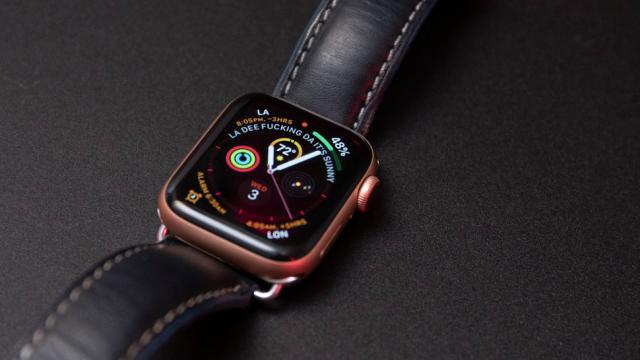The Apple Watch is the smartwatch to beat. It’s massively popular, has a full range of features, and compared to some of its competitors, leads the way in rethinking how wearables can function within the health sector. During the Apple Watch portion of Apple events, you can generally expect a feel-good reel of real-life users sharing stories of how the watch saved their lives by notifying them of their irregular heartbeat. That said, Apple’s own FDA application for its ECG app admits the watch does not detect atrial fibrillation (AFib) for heart rates exceeding 120 beats per minute—a limitation that a Forbes report suggests could leave a large number of Apple Watch users with a false sense of security.
That 120bpm limitation is, as it turns out, significant, according to Forbes. Mayo Clinic says that the heart rate of AFib patients can range anywhere from 100 to 175bpm—meaning the Apple Watch isn’t looking at a decent chunk of folks who may be affected. Furthermore, this 2015 study notes that the mean heart rate of new-onset AFib patients is 109 bpm, with a third of patients having heart rates above 120 bpm. Another just-published study in Circulation noted the Series 4 correctly identified AFib in 34 of 90 cases, for an accuracy rate of 41 per cent.
[referenced url=” thumb=” title=” excerpt=”]
By itself, those results aren’t damning, per se. They are, however, sobering for anyone high on the idea that ECG on the wrist will save a loved one’s life. It might. There’s also a good chance it might not. AFib is a tricky ailment that goes largely undetected for a reason. It’s also worth mentioning that in Apple’s FDA submission, it has purposefully defined heart rates above 120 bpm and under 50 bpm as “unclassified” and that repeated results in this range result in a notification stating that user should perhaps seek out a doctor. This is likely Apple erring on the side of caution, and it isn’t necessarily indicative of the watch’s capabilities. After all, many of the anecdotal stories of just-in-time Apple Watch notifications involve higher-than-average heart rates.
On this front, eagle-eyed readers won’t be surprised. Ever since the Series 4 introduced ECG capability, Apple has always emphasised in the fine print that the Series 4 and Series 5 are not diagnostic tools. Also, sceptical consumers will also remember that the FDA only granted the ECG app de novo clearance—meaning it’s a novel device that’s unlikely to cause widespread harm, but not a full-fledged FDA-approved medical product. That slight difference in semantics matters.
Frankly, erring on the side of caution is a good thing when it comes to wearable tech toeing the line between wellness and medical devices. Apple deserves credit for conducting massive, large-scale clinical studies with reputable partners to figure out how this tech can be applied to find new information. This particular category is rife with pseudoscience and plenty of shady wellness tech companies try to pass off white papers and internal “research” as rigorous clinical studies—and that’s truly concerning. It’s just that even as Apple does participate in all these studies, there are still huge questions surrounding how the findings get integrated into the greater healthcare system, patients’ health data privacy, and a slew of other considerations. For example, it’s not clear if everyday Apple Watch users know how to correctly interpret their data, or if family doctors even know how to handle patients who demand a checkup because their watch told them they need one.
That said, it is also worth casting an incredibly critical eye toward any study meant to prop up a consumer product’s legitimacy. Apple just recently announced it’s partnering with Johnson & Johnson to research AFib and see if it can predict strokes in seniors. That’s good for many reasons, including the massive scale of the study. The study is also one of the first to involve big tech, big pharma, and a big retailer in Best Buy—whether that’s good or bad depends on your view of those industries. You also have to consider Apple has been in talks with health insurers to provide discounts on watches. That’s not a reason to immediately flip out, but uh, no one wants that dystopian future where you’re incentivized to use a wearable to get better health insurance rates—or else.
But that’s all looking down the road. At best, health wearables are passive monitoring devices that allow you to be more mindful of your norm. Right now, it’s always helpful to remember that wearables are not a replacement for visiting your doctor and to treat any revolutionary claims as exhuberent marketing.
